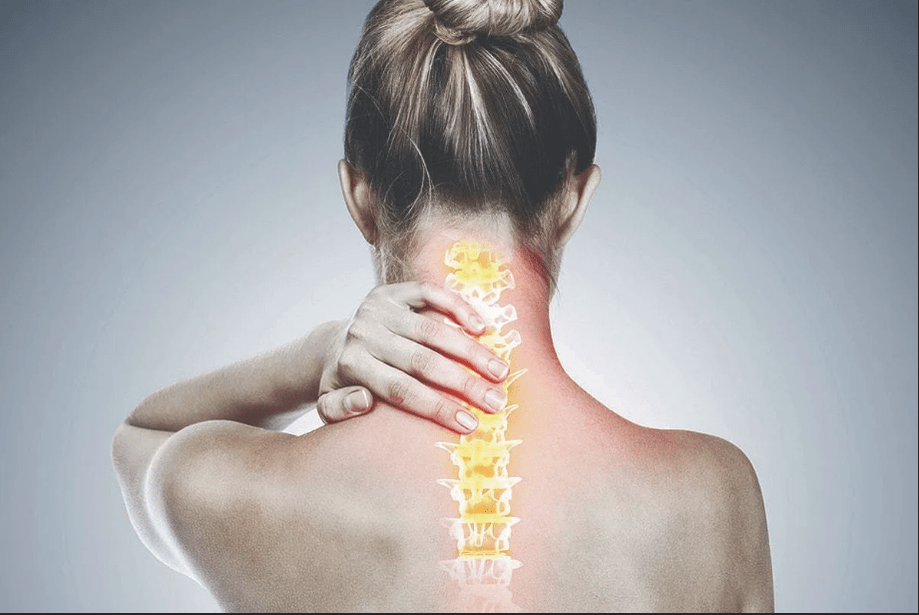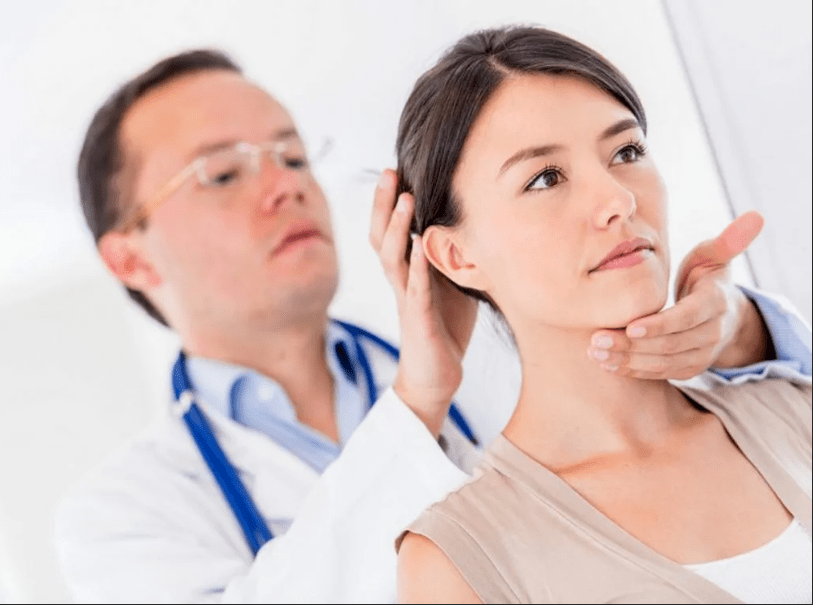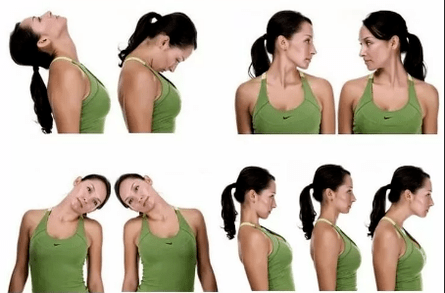The cervical osteochondria is the progressive dystrophic and bulky damage to the intervertebral discs in the area of 1-7 vertebrae belonging to the cervical area.

As a result of cervical osteochondicity, deformation, exhaustion and then damage to the vertebral bodies occurs.This disturbs the normal blood supply and nerve conductivity in the throat and in those areas that are enhanced by the nerve nerve roots.
The cervical osteochondrosis can be isolated or combined with osteochondria of other parts - chest, lumbar and sacred.
Reasons
The causes of dystrophic and degenerative changes in intervertebral discs have not yet been sufficiently studied.The assumption that osteochondria is a senile confirmation phenomenon.It is even found in children and adolescents.
A number of factors predisposed to the development of osteochondrality are distinguished.These include:
- Sedomer and sedentary lifestyle,
- Seated types of work with static load on the throat,
- Overweight, inadequate physical development,
- dysplastic processes of connective tissue,
- violation of blood circulation in the throat,
- injuries to the throat,
- Scoliosis, stop defects, uncomfortable pillows and layers,
- Hereditary predisposition, metabolic defects.
Symptoms of cervical osteochondryosis
The cervical spine, due to the features of the skeleton, simplicity, as well as the large size of the head, is particularly vulnerable to the development of osteochondralism-the vertebrae in it are the smallest compared to other parts of the spine and the muscle frame.
The most characteristic symptom that patients complain - pain in the cervical area.Depending on the damage zone, the pain can be detected
- on the collar and shoulder.
- throughout the cervical spine.
- On the front surface of the chest.
The pain for cervical osteochondria is due to the characteristics of the cervical area.
The first signs of cervical osteochondrality are insignificant and little specific:
- The pain in the throat in the evening,
- feeling of gravity in the head, headaches in the occipital zone,
- a feeling of numbness or tingling on the shoulders and hands,
- Cry the neck when you turn your head by clicking the vertebrae.
Main symptoms:
Vegetative
- Very serious neck pain and, especially, in the area just below the back of the head.
- Pain occurs after a long stay in a position (for example, after sleep).
- The throat muscles are constantly strained.
- There are difficulties in abandoning the hand on the side.
- On the affected side, the fingers are limited to movements.
Since the vertebral arteries are compressed, neurological manifestations are observed: headache, nausea, fainting.
Vertebral symptom
The pain is located behind the sternum on the left.
This type of pain should be distinguished by pain in angina (with pectoris angina, nitroglycerin is relieved, with osteochondria - no).
With a gradual violation of the intervertebral disc structure, compression (compression) and nerve root violation occurs, as well as the reduction or violation of the arteries and veins taking place in the area of the vertebral bodies.
This leads to the formation of special syndromes - radical and ischemic.
- The defeat of the roots of the first cervical vertebra (C1): violations affect the back of the head, reducing the sensitivity of the skin.
- Damage C2 gives pain to the crown of the crown and the back of the head.
- C3 damage gives throat pain on the part of the violation, a decrease in sensitivity to the tongue and hypothesis, in some cases with speech weakening and loss of language control.
- The defeat of the C4 and C5 gives shoulder and key pain, a decrease in the tone of the muscles of the head and throat, hiccups, respiratory disorders and heart pain.
- The C6 defeat is more often, giving throat pain to shoulder blade, forearm, to thumbs, skin sensitivity can suffer:
- The C7 defeat gives similar symptoms of throat pain, behind the shoulder, to the back of the hand, violating the power of the hands and a decrease in reflexes.
Blood circulation disorders due to the compression of the vessels in the cervical vertebral area give headaches to migraine, severe dizziness, visual dysfunction and ears in the ears, flickering flies in front of the eyes, disorders of autonomous functions.
There may be manifestations of heart syndrome with heart aches, lack of air and heartbeat, rhythm disorders.
Complications
The serious complications of cervical osteochondroxis are
- protrusion of intervertebral discs with the formation of a hernia (protrusion).
- The rupture of the intervertebral disc in violation of nerve and blood vessels, compression of the spinal cord is possible, which can lead to death.
- There may also be roots (root lesions), the formation of osteophytes (spondes) with a manifestation of a manifestation and paralysis.
Diagnosis

In the presence of the above complaints, it is necessary to call on the orthopedic doctor or neurologist.
First of all, the doctor will evaluate mobility and pain in the throat, sensitivity and other functions.Subsequently, the cervical spine will be required in various predictions, if necessary, computed tomography or magnetic resonance with suspicion of hernia.
In the event of a traffic disorder, re -conterved and examination of the fundus will be needed.
Treatment of osteochondry
The same symptoms can be signs of different diseases and the disease may not occur according to the book.Don't try to deal with yourself - Consult your doctor.
Today, there are both traditional and non -traditional methods for the treatment of cervical spine.
Mainly used conservative methods:
- Symptomatic analgesics treatment (Baralgin, Analgin) to relieve pain syndrome
- Taking anti -inflammatory non -sestolic drugs (Diclofenac, indomethacin, meloxicome) -to relieve inflammation and edema of tissues
- To eliminate muscle cramps, anticonvulsants are used -not -shpu, drugs to improve blood -technology circulation.
In the treatment of cervical osteochondrication, substances that restore the structure of the intervertebral discs - the vein are used.
The course of Group B vitamin treatment occurs, the external products for treatment apply - gels and ointments, creams with anti -inflammatory, heating and analgesic ingredients - voltaren.The stimulants of the regeneration of the intervertebral discs - terrace or chondroxide are displayed.
In the treatment of cervical osteochondrication, it is recommended to wear a special collar (Shantsa collar).
Complications of cervical osteochondry with spine gardens that violate sensitivity and bloodstream can be treated immediately.
The duration of treatment depends on the neglect of the condition, since osteochondria is a progressive chronic disease.Treatment can be great and preventive courses for life are performed.
Proper nutrition will help relieve the situation for osteochondria.Read more about the principles of osteochondria in our separate article.
Exercises for the treatment of cervical osteochondry:

- The adhesion itself: in a straight back position, it is necessary to reduce the shoulders as low as possible, while the neck must be pulled up.It is necessary to make at least 10 approaches at least 3 times a day.
- Self -Massage: Thanks to the neck with a towel, taking them from the ends and pull them for them alternately, spreading the throat muscles.In this case, it is necessary to ensure that the towel does not slip along the neck.
- Gymnastics for the cervical area for osteochondria: a slight bending of the throat appears as well as turns and inclination of the head.At one point, 5-7 slopes are made in every direction.This exercise is very useful for executing after self -perforation of the cervical spine.
Prevention
The health of the cervical spine is a strong and healthy back, physical activity, a comfortable bed with anatomical pillows and mattress, proper posture and proper nutrition.
It is worth avoiding throat injuries and lifting the weights.It is necessary to combine the prolonged session with periods of rest and hot.




























